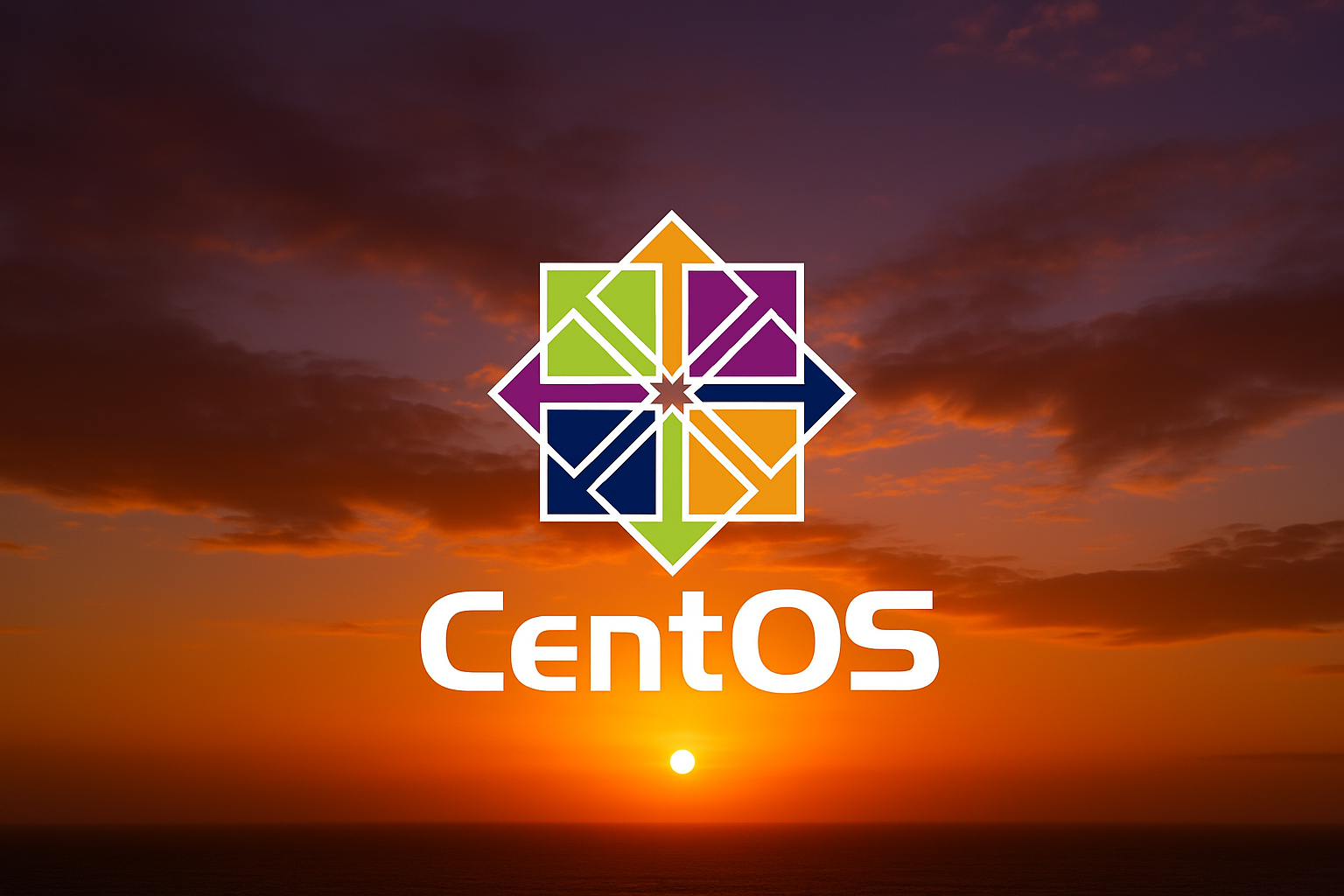The Rise, Reign, and Reinvention of CentOS: A Linux Legacy

For years, CentOS was the go-to operating system for countless Sysadmins and DevOps engineers.
Its reputation as a stable, free, and enterprise-grade Linux distribution was unmatched, making it a cornerstone of countless servers and infrastructure deployments. But a significant shift in late 2020 sent ripples through the community, marking a new chapter for the CentOS project.
Let's delve into that CentOS journey, from its humble beginnings to what our options for replacing it.
How CentOS was created
The story of CentOS begins with a desire for a free alternative to Red Hat Enterprise Linux (RHEL).
RHEL, while a powerful and robust operating system, comes with a subscription cost, which includes Red Hat's renowned support and certifications. However, Red Hat, as a proponent of open source, also makes the source code for RHEL publicly available under various open-source licenses, primarily the GNU General Public License (GPL).
This is where the idea for CentOS (Community ENTerprise Operating System) was born.
The founders of CentOS project—Gregory Kurtzer and Rocky McGaugh with numerous other open-source contributors—started building CentOS from RHEL's publicly available source code. Their intention was to create a stable, secure, and predictable alternative of RHEL, without the associated subscription fee.
They released the first version of CentOS—CentOS version 2—in May 2004.
From there on, CentOS became the enterprise-grade Linux accessible to a broader audience, including small businesses, developers, and those building non-mission-critical infrastructure.
The CentOS development process (Pre-2020)
Before the dramatic changes in 2020, the CentOS development process was straightforward and largely predictable:
- Downstream Rebuild: The CentOS project acted as a "downstream" distributor. This meant that once Red Hat released a stable version of RHEL, the CentOS community would obtain the corresponding source code.
- Recompilation and Rebranding: The CentOS team would then meticulously recompile the source code, removing Red Hat's proprietary branding, logos, and trademarks. This was crucial to comply with Red Hat's licensing while maintaining functional compatibility.
- Community-Driven Quality Assurance: While Red Hat's rigorous testing was inherent in the RHEL source, the CentOS community would also conduct its own testing and quality assurance to ensure the rebuilt binaries were stable and reliable.
- Stable Releases: CentOS releases followed the RHEL major and minor version numbers (e.g., CentOS 7, CentOS 8), typically lagging RHEL releases by a few weeks or months. This allowed for stability and bug fixes to trickle down from RHEL.
- Special Interest Groups (SIGs): CentOS fostered a vibrant community with various Special Interest Groups (SIGs) focused on specific areas like Cloud, Storage, Virtualization, and more. These SIGs contributed to packaging additional software and supporting the ecosystem.
CentOS: A trusted platform among Sysadmins and DevOps
CentOS earned its stellar reputation through several key factors:
- RHEL Compatibility: Its "bug-for-bug" compatibility with RHEL was a massive selling point. Applications certified for RHEL generally ran flawlessly on CentOS, providing a reliable and familiar environment for developers and system administrators. This meant minimal learning curve for those already familiar with RHEL or Fedora.
- Stability and Reliability: Inheriting RHEL's commitment to stability, CentOS offered a rock-solid foundation for production servers. Its slower release cycle, focused on long-term stability and extensive testing, made it ideal for environments where uptime and predictability were paramount.
- Long-Term Support: CentOS releases offered long-term support, mirroring RHEL's lifecycle, which provided years of security updates and bug fixes, crucial for enterprise deployments.
- Active Community: Despite being free, CentOS boasted a large and active community that provided excellent peer-to-peer support through forums, mailing lists, and IRC channels. This collective knowledge base was invaluable.
- No Licensing Costs: For many, the most significant advantage was the complete absence of licensing fees. This allowed organizations to deploy Linux at scale without incurring significant software costs, freeing up budget for hardware or other services.
Red Hat's role in CentOS
Initially, CentOS was an independent, community-driven project.
In January 2014, Red Hat announced that it would formally sponsor the CentOS project. This "joining of forces" saw Red Hat take a more direct role, employing key CentOS developers and providing significant resources and infrastructure.
While the project remained ostensibly community-driven, Red Hat's influence and investment grew substantially. This move was generally seen as a positive for CentOS, providing more stability and resources to the project.
The Announcement of discontinuation and gradual shift
The landscape dramatically changed in December 2020.
Red Hat announced a significant shift in the CentOS project's direction where instead of continuing CentOS Linux as a downstream rebuild of RHEL, the focus would fully transition to CentOS Stream.
This meant a planned discontinuation of the traditional CentOS Linux releases:
- CentOS Linux 8: Support abruptly ended on December 31, 2021, much earlier than its originally projected end-of-life date in 2029. This was the most impactful change, catching many users off guard.
- CentOS Linux 7: Support concluded on June 30, 2024. This marked the definitive end of the traditional CentOS Linux as a supported distribution.
This announcement sparked considerable debate and frustration within the community, as many had built their infrastructure on the premise of CentOS Linux's long-term stability and RHEL compatibility.
What is CentOS Stream?
While discontinuing CentOS, RedHat introduced CentOS stream.
CentOS Stream is not a replacement for the traditional CentOS Linux in terms of its role.
Instead, it represents a fundamental change in the development model. CentOS Stream is a rolling-release distribution that sits upstream of RHEL, not downstream.
Think of it as:
- Fedora (Upstream): Where major new features and innovations in the Red Hat ecosystem are initially developed and tested.
- CentOS Stream (Midstream): A continuous delivery of the next minor release of RHEL. Changes and updates are integrated into CentOS Stream before they are hardened and included in an official RHEL release. It's effectively the public development branch for RHEL.
- Red Hat Enterprise Linux (Downstream): The stable, commercially supported enterprise operating system.
This new model allows Red Hat to gather feedback and contributions from the community during the RHEL development cycle, rather than after a stable RHEL version has been released.
Key differences between CentOS and CentOS Stream
These differences are crucial for understanding the current landscape:
| Feature | Traditional CentOS Linux (Discontinued) | CentOS Stream (Current) |
|---|---|---|
| Position | Downstream rebuild of stable RHEL releases. | Upstream/Midstream of RHEL; tracks just ahead of upcoming RHEL releases. |
| Stability | Highly stable, "bug-for-bug" compatible with stable RHEL. | Less stable than traditional CentOS; a continuous integration build for RHEL. |
| Updates | Received updates/patches after RHEL. | Receives updates/patches before they land in RHEL. |
| Release Cycle | Fixed point releases (e.g., CentOS 7, CentOS 8) with long-term support. | Rolling release; continuous stream of updates. |
| Purpose | Production server OS, free RHEL alternative. | Development platform for RHEL, for developers and early adopters. |
| Contribution | Primarily consumption of RHEL sources. | Direct contribution path to the next RHEL release. |
Alternatives to CentOS Stream
The discontinuation of CentOS while introducing CentOS Stream—a no match alternative—prompted a significant scramble in the open-source community to create viable alternatives for those who relied on the traditional model.
The primary focus for these alternatives is to maintain the "bug-for-bug" compatibility with RHEL that CentOS once offered.
So, here are the leading contenders:
- Rocky Linux: Spearheaded by CentOS co-founder Gregory Kurtzer, Rocky Linux aims to be a true spiritual successor to CentOS Linux. It's a community-driven enterprise operating system designed to be 100% bug-for-bug compatible with RHEL, providing a stable, production-ready alternative.
- AlmaLinux: AlmaLinux is another strong contender for the CentOS Linux mantle. It's also a community-driven, free, open-source, and RHEL-compatible distribution that offers a clear migration path for former CentOS users.
- Oracle Linux: While not new, Oracle Linux is an existing RHEL-compatible distribution offered by Oracle. It's free to download and use, but Oracle charges for support services. Its primary advantage is its close integration with Oracle's hardware and software stack.
- Red Hat Enterprise Linux (RHEL): For those seeking the highest level of stability, direct vendor support, certifications, and a comprehensive enterprise ecosystem, migrating to a paid RHEL subscription is the official path. Red Hat also offers free RHEL developer subscriptions for individual developers and small teams.
- Ubuntu LTS: While not RHEL-compatible, these popular Debian-based distributions (especially their Long Term Support versions) are viable alternatives for those who don't have a strict requirement for RHEL compatibility and prefer a different ecosystem and package management system.
The shift in CentOS's direction has undeniably reshaped the enterprise Linux landscape.
While the traditional CentOS Linux is no longer, its legacy lives on through projects like Rocky Linux and AlmaLinux, ensuring that the spirit of free, RHEL-compatible enterprise Linux continues to thrive.
Are you still running CentOS in production servers? What Linux distro are you going to replace them with?

